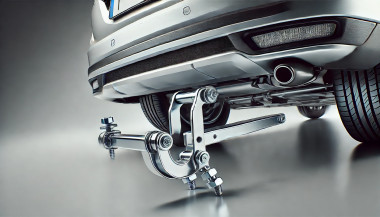Unveiling the Anatomy of Your Car
Your car is more than just a mode of transportation—it's a complex machine composed of various parts working in harmony to ensure smooth and safe driving. Understanding these essential car parts not only helps you appreciate your vehicle better but also empowers you to identify issues, perform basic maintenance, and communicate effectively with mechanics. In this guide, we’ll explore the key components that keep your car running and why they’re vital for optimal performance.
1. Engine: The Heart of Your Vehicle
The engine is the powerhouse of your car, converting fuel into energy to propel the vehicle forward. There are various types of engines, including:
- Internal Combustion Engines (ICE): Common in most vehicles, using gasoline or diesel.
- Hybrid Engines: Combining a traditional engine with an electric motor for better efficiency.
- Electric Motors: Found in EVs, powered by rechargeable batteries.
Key components within the engine include pistons, the crankshaft, and the timing belt. Regular maintenance like oil changes and timely inspections are crucial for keeping the engine in good condition.
2. Transmission: Changing Gears Made Easy
The transmission system ensures that power from the engine is transferred to the wheels at the correct speed and torque. There are two main types of transmissions:
- Manual Transmission: Requires the driver to shift gears manually.
- Automatic Transmission: Shifts gears automatically, providing greater convenience.
Proper transmission fluid levels are essential for smooth gear transitions and the longevity of the system.
3. Battery: Your Vehicle's Power Source
The car battery supplies the electrical power needed to start the engine and operate various electrical systems, such as lights, wipers, and infotainment. Modern vehicles may also include auxiliary batteries for additional power needs.
Maintenance Tip: Regularly check battery terminals for corrosion and ensure proper voltage levels, especially in extreme weather conditions.
4. Braking System: Your Lifeline on the Road
The braking system ensures the vehicle slows down or stops when needed, making it a critical safety component. Key parts include:
- Brake Pads and Rotors: Convert kinetic energy into heat, slowing the car down.
- Brake Fluid: Transfers force from the brake pedal to the braking mechanism.
Regular inspection of the braking system can prevent wear and ensure reliability.
5. Tires and Wheels: Where the Rubber Meets the Road
Tires and wheels are vital for traction, handling, and overall vehicle stability. There are various types of tires designed for specific conditions, such as all-season, winter, and performance tires.
Maintenance Tip: Regularly check tire pressure, alignment, and tread depth to ensure safe driving and optimal fuel efficiency.
6. Suspension System: Smoothing Out the Ride
The suspension system absorbs shocks from uneven road surfaces, ensuring a smooth and stable ride. Key components include:
- Shock Absorbers: Reduce impact from road irregularities.
- Struts and Springs: Provide structural support and maintain balance.
A well-maintained suspension system enhances comfort and handling.
7. Exhaust System: Keeping Emissions in Check
The exhaust system directs harmful gases away from the engine and reduces emissions. Key components include the muffler, catalytic converter, and exhaust pipes.
Environmental Note: A faulty exhaust system can increase emissions and negatively impact air quality. Regular checks are essential for compliance with emission standards.
8. Cooling System: Preventing Overheating
The cooling system regulates the engine's temperature to prevent overheating. It includes components like the radiator, coolant, and thermostat.
Maintenance Tip: Regularly check coolant levels and inspect hoses for leaks to ensure efficient cooling.
9. Fuel System: Delivering Energy to the Engine
The fuel system stores and supplies fuel to the engine for combustion. Key parts include the fuel pump, injectors, and fuel tank.
Efficiency Tip: Clean fuel injectors and replace the fuel filter as needed to maintain optimal fuel efficiency.
10. Electrical System: Powering Your Vehicle's Features
From the headlights to the infotainment system, the electrical system powers numerous features in your car. It includes wiring, alternators, and fuses.
Maintenance Tip: Inspect fuses and ensure the alternator is functioning properly to avoid electrical issues.
Empowering Yourself Through Knowledge
Understanding the essential parts of your car equips you with the knowledge to maintain your vehicle effectively and address issues proactively. By staying informed, you can extend the life of your car, save on repair costs, and ensure a safer driving experience.
Whether you’re a car enthusiast or a regular driver, knowing your vehicle’s anatomy is the first step toward smarter car ownership.

 (1)_1736339943.jpg)
_1745925835.jpg)


_1736343521.jpg)